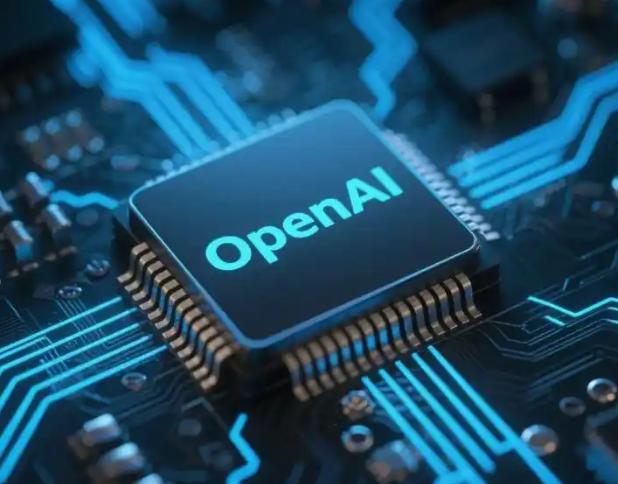
Recently, OpenAI announced a strategic partnership with semiconductor giant Broadcom, planning to mass-produce and put into use the self-developed AI chip "XPU" in 2026. This indicates that the manufacturer of ChatGPT is attempting to meet the huge demand for computing power and reduce its reliance on chip giant NVIDIA. OpenAI's CEO, Sam Altman, has publicly joked on multiple occasions, admitting that the shortage of NVIDIA GPUs is a key bottleneck limiting the company's ability to develop new models and enhance service capabilities. This chip is crafted using TSMC's most advanced 3nm process. Initially, it will serve the internal training and inference tasks of OpenAI's large models, helping to enhance the autonomy and system efficiency of computing power. This indicates that OpenAI has taken a crucial step towards vertical integration, which also means that OpenAI not only obtains custom hardware but also gains a strong supply guarantee for itself. According to several people familiar with the cooperation project, this chip jointly designed with the American semiconductor giant Broadcom will be shipped next year. Boosted by this news, Broadcom's stock rose by 4.5% in after-hours trading on September 4, 2025, and soared by over 10% on the opening day of September 5.
OpenAI's self-developed chip initiative has caused a stir in the technology sector and brought complex and multi-faceted impacts. Firstly, it has an impact on the technology field. Chip design requires multiple iterations of prototyping and verification, and the first success rate is only about 60%. If there are design flaws, it may lead to delays in mass production or cost overruns. For example, the Wi-Fi chip designed by Broadcom for clients such as Apple previously had vulnerabilities that led to the risk of data interception for billions of devices, although it has been fixed, it exposed the potential challenges of custom chips in security and stability. OpenAI needs to ensure that the chip is compatible with existing AI frameworks to avoid ecological fragmentation. If the optimization is insufficient, it may not be able to fully leverage the performance advantages of the custom chip. The chip needs to be deeply optimized for the Transformer architecture but requires time for technology accumulation. In the short term, it may be difficult to surpass the general performance of NVIDIA GPUs. The chip uses TSMC's 3nm process, but the global advanced process capacity is tight, and if TSMC prioritizes orders for clients such as Apple and NVIDIA, OpenAI may face capacity bottlenecks and affect the production schedule.
Secondly, it has an impact on the technology market. NVIDIA has built an unshakable ecological advantage through the CUDA platform and a large developer community. OpenAI's self-developed chip needs to attract developers to adapt to the new architecture, otherwise, it may face the dilemma of "having chips but no ecosystem". OpenAI's self-developed chip will be used internally initially and not for sale, which can reduce short-term risks, but in the long run, it may miss out on external market opportunities. Major companies such as Google and Amazon have already launched their own self-developed chips. OpenAI needs to prove that its chips have differentiated advantages in performance, cost, or energy efficiency to attract external customers. NVIDIA may respond to the challenge by lowering prices, launching more advanced GPUs, or strengthening cooperation with cloud service providers, squeezing the market space for OpenAI's self-developed chips.
Thirdly, there is pressure on funds and investment. The single version development cost of large-scale chip design projects may reach $500 million, and if software and peripheral equipment are included, the total investment may double. OpenAI needs to continuously invest a huge amount of funds to support chip iterations, which poses a pressure on its cash flow. Chip production requires the early locking of production capacity, but the initial order volume may be small, resulting in higher unit costs. If the chip performance does not meet expectations, it may affect OpenAI's willingness to adopt, further exacerbating the cost pressure. OpenAI estimates that it will consume $115 billion in cash by 2029, with chip procurement costs accounting for over 60%. Although self-developed chips can reduce long-term costs, they require high upfront research and production expenditures in the short term, which may exacerbate cash flow difficulties.
Although the strategy of OpenAI and Broadcom's cooperation on self-developed chips faces technical risks, financial pressures, and challenges in ecosystem compatibility, this collaboration may become an important milestone in the iterative development and commercialization of AI technology, laying the foundation for the computing power revolution in the future intelligent era.

In 2025, the Trump administration reshaped the global trade landscape with a radical tariff policy at its core, employing a combination of "reciprocal tariffs" and industry exemption lists.
In 2025, the Trump administration reshaped the global trade…
On December 26 local time, an apology statement from Japane…
When the U.S. government blacklisted EU digital regulatory …
The EU summit recently passed a resolution, in which 24 mem…
Europe's economy in 2025 exhibits a distinct feature of "su…
Russian President Vladimir Putin said that Russia has obser…